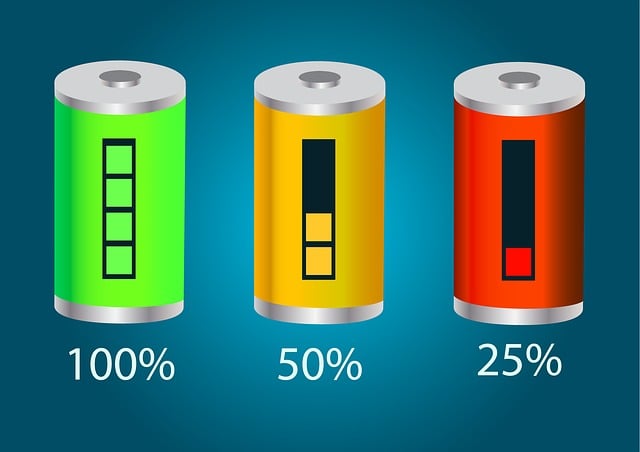Binance Brokerage Charges in 2025: An In-Depth Analysis for Traders and Investors
Author: Jameson Richman Expert
Published On: 2025-08-04
Prepared by Jameson Richman and our team of experts with over a decade of experience in cryptocurrency and digital asset analysis. Learn more about us.
Understanding the intricacies of Binance brokerage charges in 2025 is essential for traders and investors seeking to optimize their trading strategies, reduce costs, and enhance profitability. As one of the world's largest and most influential cryptocurrency exchanges, Binance continuously updates and refines its fee structures to stay competitive amid evolving market conditions, regulatory landscapes, and technological advancements. This comprehensive guide delves into Binance’s current fee models, compares them with peer exchanges, and explores advanced strategies—including leveraging platform features, referral programs, automated trading tools, and fee optimization techniques—to help users minimize trading expenses effectively and sustainably.

Comprehensive Overview of Binance Brokerage Charges
Binance’s brokerage charges span a wide range of services, including spot trading, futures trading, margin trading, staking, lending, and decentralized finance (DeFi) offerings. These fees are dynamically influenced by multiple factors such as the trader’s 30-day trading volume, account tier, payment method, and whether the order is a maker or taker. As of 2025, Binance continues to adapt its fee structure to promote high-volume trading, reward loyalty, ensure regulatory compliance, and sustain its revenue streams.
Detailed Fee Structure Breakdown
Binance’s fee schedule is segmented into various categories, each tailored to specific trading activities and financial services:
- Spot Trading Fees: The standard fee rate is 0.1% for both maker and taker orders. Traders can lower these fees through high trading volumes, holding BNB tokens, or participating in promotional discounts. For example, traders with a monthly trading volume exceeding $1 million may access tiered discounts, sometimes as low as 0.075% or lower depending on their tier level.
- Futures Trading Fees: Futures trading fees are generally lower than spot trading, starting at 0.02% for makers and 0.04% for takers. Binance offers tiered discounts based on trading volume and BNB holdings, with top-tier users paying as low as 0.015% for makers and 0.035% for takers. Futures trading also involves funding rates—periodic payments exchanged between long and short positions—that impact overall costs and profitability.
- Margin Trading: Margin trading fees include borrowing interest rates that vary depending on the cryptocurrency, leverage level, and loan duration. These interest rates are competitive, with options to minimize costs by choosing optimal leverage and repayment strategies, and utilizing Binance’s margin trading tools for risk management.
- Staking and DeFi Services: Fees associated with staking, liquidity provision, and lending are typically platform commissions on earned rewards or transaction fees. During promotional periods, Binance often reduces or waives these fees to stimulate platform adoption and liquidity.
- Withdrawal Fees: Fixed network transaction fees fluctuate based on blockchain congestion and the specific cryptocurrency. These fees are designed to cover network costs and are periodically adjusted by Binance in response to real-time network conditions, ensuring cost efficiency while maintaining service reliability.
Paying trading fees with Binance Coin (BNB) can provide discounts of up to 25%, significantly lowering overall trading costs. This incentivizes users to hold, stake, and utilize BNB within the Binance ecosystem, fostering user loyalty and ecosystem expansion.
Maker vs. Taker Fee Dynamics in 2025
The distinction between maker and taker fees remains a core component of Binance’s fee policy. Makers submit limit orders that add liquidity to the order book, incurring lower fees (e.g., 0.075%) to incentivize liquidity provision. Takers execute market orders that match existing orders, often paying higher fees (e.g., 0.1%). In 2025, Binance continues to promote maker trades through tiered discounts, rewarding traders who add liquidity, which enhances market depth, reduces spreads, and fosters a more efficient trading environment. This approach aligns with Binance’s goal of maintaining a stable, liquid, and competitive marketplace.
Benchmarking Binance Against Peer Exchanges
To assess Binance’s competitiveness, it’s crucial to compare its fee structure with other leading platforms like MEXC, Bitget, and Bybit. These exchanges offer similar tiered fee systems, promotional discounts, referral programs, and innovative trading features. Analyzing these differences helps traders select platforms aligned with their trading volume, strategic goals, and cost-efficiency preferences, especially as fee structures evolve in 2025.
MEXC’s Referral Program and Fee Advantages
MEXC’s referral program, accessible via this link, offers tiered commissions that benefit both referrers and referees. The program reduces trading costs and provides additional incentives for community-driven growth. High-volume traders often benefit from lower fee tiers, exclusive promotions, and increased referral bonuses, making MEXC an attractive alternative for cost-conscious traders seeking maximum margins. Moreover, MEXC’s fee structure emphasizes transparency and flexible tier upgrades, enabling traders to optimize costs as their trading volume grows.
Bitget’s Referral Benefits and Automated Trading
Bitget’s referral system, detailed at this link, offers lucrative commissions for inviting friends and tiered benefits based on trading volume. Additionally, Bitget provides advanced trading tools such as trading bots, automated strategies, and copy trading, which help traders reduce manual trading costs, improve execution efficiency, and capitalize on market opportunities with minimal intervention. These features are critical in 2025’s competitive environment, allowing traders to optimize costs while maintaining high performance and risk management standards.
Bybit’s Incentives and Automated Trading Ecosystem
Bybit’s referral program, available at this link, emphasizes incentives for high-frequency and automated traders. Its ecosystem supports various automated trading strategies, including grid trading, arbitrage, and bot-driven trading, which can significantly reduce manual trading costs, improve execution speed, and boost profitability. These features are increasingly vital in 2025, empowering traders to manage costs efficiently and adapt swiftly to volatile market conditions.
Key Factors Impacting Binance Brokerage Charges in 2025
Several dynamic factors influence Binance’s fee landscape, including:
- Trading Volume Tiers: Higher 30-day trading volumes—often exceeding $50,000, $500,000, or more—grant users access to lower fee tiers, sometimes as low as 0.02% for maker and 0.04% for taker fees. These discounts incentivize active trading, liquidity provision, and strategic order placement, promoting a healthy trading ecosystem.
- BNB Holdings and Fee Payments: Paying fees with BNB during promotional periods or for fee discounts can yield savings of up to 25%, further encouraging BNB ecosystem participation and staking activities.
- Market Conditions and Regulatory Changes: Fee adjustments may occur in response to market volatility, liquidity requirements, or new regulatory mandates, ensuring Binance remains competitive and compliant globally.
- Promotional Campaigns: Temporary fee reductions during platform launches, special events, or new user onboarding create advantageous entry points for strategic traders and investors.
Impact of Trading Volume and BNB on Fees
High-volume traders benefit substantially from tiered discounts, with thresholds often set at $50,000, $500,000, or higher in 2025. Such traders can pay as low as 0.02% for maker fees and 0.04% for taker fees, translating into significant savings over time. Utilizing BNB for fee payments during promotional periods enhances discounts further, reinforcing Binance’s strategy of ecosystem engagement and loyalty growth.

Broader Context of Cryptocurrency Trading Fees
Binance’s brokerage charges are part of a comprehensive trading cost ecosystem, including deposit and withdrawal fees, blockchain network transaction costs, and platform-specific charges. Effective cost management involves understanding and optimizing all these components. As transparency increases and competition intensifies, traders should evaluate total trading costs—beyond just exchange fees—to maintain profitability and competitive advantage.
For an in-depth exploration of how these costs interplay and influence trading strategies, visit this detailed article.
Conclusion
In 2025, Binance’s brokerage charges remain a critical consideration for traders aiming for cost-effective and efficient trading. Its tiered fee structure, incentivized by high trading volumes, BNB holdings, and strategic order placement, positions Binance as a leading platform in the competitive landscape. Comparing Binance’s fees with peers such as MEXC, Bitget, and Bybit enables traders to tailor strategies for maximum cost-efficiency, ultimately boosting profitability.
Staying updated with the latest fee policies, leveraging referral programs, and utilizing automated trading tools are vital strategies to further reduce costs. For comprehensive insights into automated trading strategies and fee management, explore this guide and this article on crypto bots.